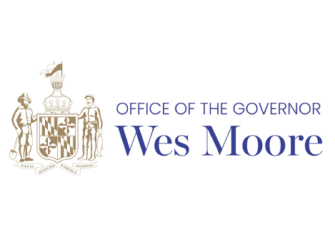
Face masks help protect employees, customers, and the public. Here’s what employers can do to implement a face mask policy in their workplace.

The outbreak of COVID-19 in the United States created a rush to implement safety protocols. Face masks, gloves, and hand sanitizer are high in demand. In the early weeks of the breakout, Americans were widely left to fend for themselves when it came to gathering correct information and the suggested PCE supplies.
Most states have issued a shelter-in-place mandate, asking people to stay at home and practice social distancing protocols. The Center for Disease Control and Prevention (CDC) strongly recommends that people wear face masks when going out into public.
Where does the responsibility for face mask implementation lie in the workplace?
Can employers require employees to wear face masks?
The U.S. Equal Employment Opportunity Commission (EEOC) has released guidance that indicates that an employer may require employees to wear PPE, such as a face mask, gloves, oir gowns, to reduce transmission.
Additionally, the Centers for Disease Control and Prevention (CDC) recommends individuals wear cloth face masks in public, and where social distancing measures are difficult to maintain. Although the CDC recommends this, it is not a requirement.
But across the United States, states are taking the orders further. Governors are making their own requirements for face protection.
The following states have varying degrees of requirements for employees and customers of essential businesses to wear a face covering over their nose and mouth:
- Colorado
- Connecticut
- Georgia
- Illinois (goes into effect May 1, 2020)
- Maryland
- Michigan
- New Jersey
- New York
- Pennsylvania
- Rhode Island
- Texas
- Utah
- Vermont
- Washington, D.C.
In addition, local municipalities are requiring face coverings, including the following California counties:
- Alameda
- Contra Costa
- Los Angeles
- Marin
- Riverside
- San Bernardino
- San Diego
- San Francisco
- San Mateo
- Sonoma
- Yolo
FACE MASKS PROTECT THE EMPLOYEE, THE WIDER WORKPLACE, AND THE PUBLIC.
Policies on face masks are being implemented because they help solve a major safety concern. Similar to latex gloves worn by a nurse — face masks protect the employee, the wider workplace, and the public. Like gloves, individuals should discard masks in a biohazard bag (if available) after each use.
Employers who require the use of face masks should write it out in a clear policy. The policy would then protect the employer if they needed to take action for an employee that refused to comply.
How can an employer create a policy on face masks?
Most employers are still navigating how to implement safety standards.
Since new suggestions and protocol regarding COVID-19 are unfolding daily, employers are having a difficult time keeping up. Because this is new territory, it’s important that employers continue to make and communicate new policies with employees on a regular basis. It is better to have to amend an existing policy later on than to not have anything in place in case of an emergency.
New policies on wearing face masks should be specifically written, backed by a legal team (if applicable), and implemented by Human Resources and/or supervisors.
NEW POLICIES ON WEARING FACE MASKS SHOULD BE SPECIFICALLY WRITTEN, BACKED BY A LEGAL TEAM (IF APPLICABLE), AND IMPLEMENTED BY HUMAN RESOURCES AND/OR SUPERVISORS.
What should the policy on face masks be?
The policy on face masks should be based on information provided by the CDC or the employer’s state government. Employers should check their state government and the CDC’s website and social media pages on a regular basis to keep informed on best practices.
The best rule of thumb is to implement a policy that all employees wear face masks. Your company’s CEO, human resources, and legal team should decide the specifications.
Here are several suggestions on what a strong policy should include:
- An explanation with facts. Employees want to know why they are being encouraged to comply with a new policy. Explain the facts of COVID-19 and how wearing a face mask helps to reduce the spread of the virus.
- Instructions for proper wear. The employees should have instructions on how to wear a face mask properly.
- Specify when employees should wear face masks. This needs to be as specific as possible. Do you want employees to wear their masks from the beginning of their shifts until they leave? Where should employees store masks if/when they take them off?
- How can employees obtain a mask? Will the employer supply the mask? Will masks be cloth and reusable or disposable paper masks?
- Disposal of face masks. How should employees dispose of face masks? Will biohazard bags be available?
- The consequences of not abiding by policy. What are the consequences of not wearing the face mask as instructed? Will employees be written up a certain amount of times before being suspended without pay?
- Signature. Each employee should sign off on the new face mask policy for legal purposes.
Takeaways
Employers can require an employee to wear a face mask. Having a policy in place will protect the employer and the employee should anything come up legally.
The most important thing in the whole process of creating the policy is providing a strong explanation as to why the policy is being created — to protect everyone involved.
Employers should keep updating employees as policies change. Taking things one step farther by explaining to customers that masks are being worn for their protection also advertises to employees that their actions matter.
Whether you are an employer or employee, you may want to check out this tutorial on how to make face masks.



